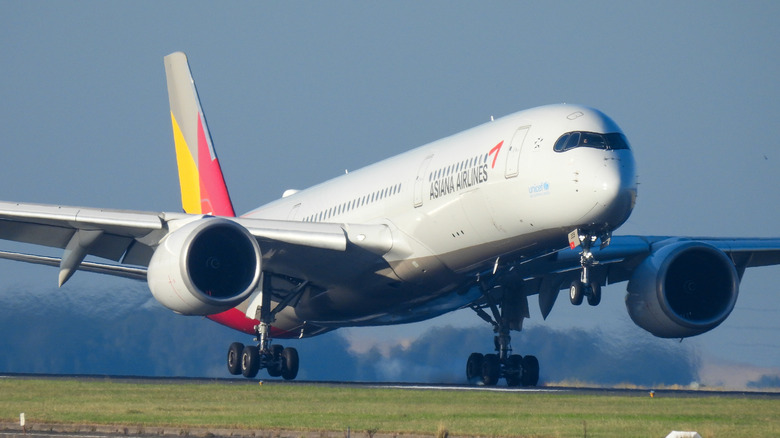
Passenger aircraft are rather uniform, for the most part, with the familiar white color scheme of commercial planes and so on. Lots of travelers scarcely give their exteriors a second thought. There is one aspect of an airliner's appearance that may have struck you as odd, though: the black paint around the windows of the cockpit. It's so distinctive on some aircraft that sport it, in fact, that Virgin Atlantic declares that the "Airbus A350 wear[s] a Zorro mask." The paint is not in homage to the vigilante
swordsman otherwise known as Don Diego de la Vega, though. There's a very logical and practical purpose: It helps the pilots and crew to manage the temperature and their visibility within the cockpit.
In response to the carrier's query, Airbus Head of Communications Business Partners, Donna Lloyd, explained that "the emblematic 'Ray-Ban' like black windshield eases the window's maintenance and contributes to harmonising the thermal condition of this temperature-sensitive window area." Lloyd also notes that the shape of the aircraft's nose and cockpit windows "helps the air flow hug the surface, in the least turbulent manner, thereby reducing drag" while offering a wider view. The A350 is regarded as one of the best aircraft for long-haul flights, and traits like this certainly don't hurt its case.
The panes of glass in a cockpit's windshield can see some contraction and expansion with temperature changes. This can lead to stress in the area over time. This black surface, then, helps to distribute some of that heat, aiding in the management of that issue. Additionally, it's well known that the color black absorbs radiation (read: heat) very effectively. By surrounding the cockpit windows with the color, the aircraft is also able to protect the cockpit's occupants from some of the light.
Read more: 10 Airplanes That Managed To Fly With Staggeringly Low Horsepower
The Dangers Of Sunlight In The Cockpit

Whether you're driving on a road or flying in the sky, the sun's dazzling light can be a huge potential hazard. Pilots can get the worst of it. The iconic image of the aviators-toting pilot isn't just something that emerged for style's sake. A Federal Aviation Administration document titled "Sunglasses for Pilots: Beyond the Image" reveals just what a crucial piece of equipment they can be. "Exposure to UV radiation increases by approximately 5 percent for every 1,000 feet of altitude," the FAA cautions. The difficult thing, then, is that crews have to balance a wide, spacious view while ensuring that they don't sustain damage to their vision.
The key is selecting sunglasses that provide the right level of protection while not darkening vision too much to obscure anything essential within the cockpit. This has never been an issue to take lightly. In fact, in December 2014, a Jama Dermatology paper (via ScienceDaily) concluded that "pilots flying for 56.6 minutes at 30,000 feet get the same amount of radiation as that from a 20-minute tanning bed session." Glare, in and of itself, causes a potential fatal visual disturbance that must be rectified, and the black mask helps mitigate that, but what some underestimate is the threat underneath that. "UV-A transmission inside airplanes can play a role in pilots' increased risk of melanoma," per the study.
The Airbus A350, a model that helped popularize the now-iconic Airbus "black paint" look, was also designed to boast more of a panoramic view from the cockpit. The mask around the windows is well-established as a typical Airbus trait, as seen on some of the carrier's other models like the A330neo. As such, it's also something of an identifying feature in its own right, something brands always emphasize.
Want the latest in tech and auto trends? Subscribe to our free newsletter for the latest headlines, expert guides, and how-to tips, one email at a time.
Read the original article on SlashGear.













